Perforations
Perforations or “perfs” are generally classified for print specifications in one of two ways: Bursting strength and TPI, which is commonly called either “Ties Per Inch” or “Teeth Per Inch”.

Burst and Tear Strength
Burst strength is a measurement of the pressure that is required to detach the perforated section of a document. Tear strength is the physical effort necessary for removal of the perforated section.
Tear strength can be categorized as “light release” which is easily torn, “medium release” which gives moderate resistance to removal, or “stiff release” which provides the greatest resistance from repeated handling and attempted removal.
The purpose and function of the perforated section often determines whether the perforation is to be an easy release variety (3 to 6 TPI) or a stiffer release (10 to 18 TPI). The weight of the stock combined with the TPI will also affect the burst strength.
Ties Per Inch (TPI)
Teeth per inch or ties per inch are both approximately the same count, but not the same dimensions. The tie or tab is the part of the perforation where the paper does not get cut, but remains intact to “tie” the paper together.
The ties, or uncut areas, alternate with cut areas to form the perforation. The tied areas of the perforation are usually shorter in width than the cut areas in order to allow for easier detachment of the sections separated by the perforation.
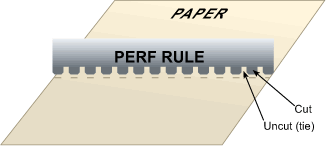
Application Methods
Products Printed and Perforated Online (Web Presses)
When a perforation must be applied parallel to the direction that the paper travels through the printing press, a steel segmented wheel is used. The segmented wheel rolls along the paper and applies the required cuts per inch as the paper is pulled through the press. Multiple perforations can be applied at the same time.
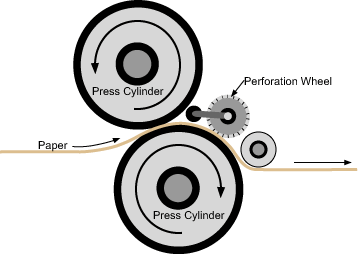
For perforations that must be perpendicular to the direction the paper travels through the printing press, steel perforation rules are used, which are inserted into cylinders on the press. As the cylinders revolve, the perforations are cut into the paper.
More than one perforation may be applied at once, but the print supplier may be much more limited in the number and position of perpendicular perfs that can be applied at one time as compared to the number and positions of parallel perforations. Both types of perforations can be applied at the same time.
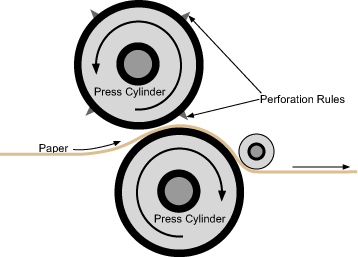
Printed Products Perforated OfflineÂ
There are occasions when perforations are added as an offline process, after the product has been printed. Generally, products that have a perforation applied offline are for smaller quantities and have been printed on sheet fed presses. Large quantities are more economical to print and perf in one operation at a web press.
To apply both parallel and perpendicular perforations, the paper is sent through the equipment twice. To help save time, some products can be manufactured with several printed copies on one large sheet so that when the sheet is sent through the perfing equipment, the perforations are applied to all of the copies on the large sheet at the same time. The large sheets are then cut into individual finished pieces.
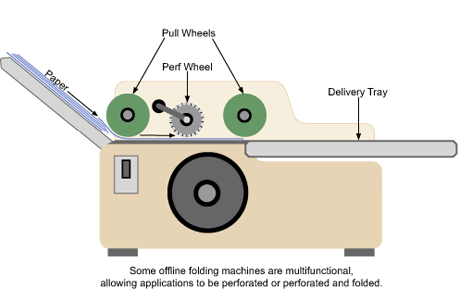
Perforations that are more complicated, such as a perforation that borders a detachable business card or a rolodex card within a larger sheet, can be applied with a perf cutting method, which is accomplished much the same as die cutting.
Perforating blades, which contain cut and uncut areas, are constructed into a pattern. The cut area of the blade strikes through the material while the uncut segment or tie of the blade does not cut the paper, enabling the perforated area to remain attached to the document until it is to be removed.
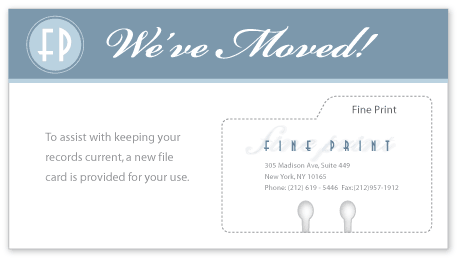
NOTE: Always check with the supplier of the product to insure that the required perforation can be accomplished on the material desired and in the location or locations indicated.